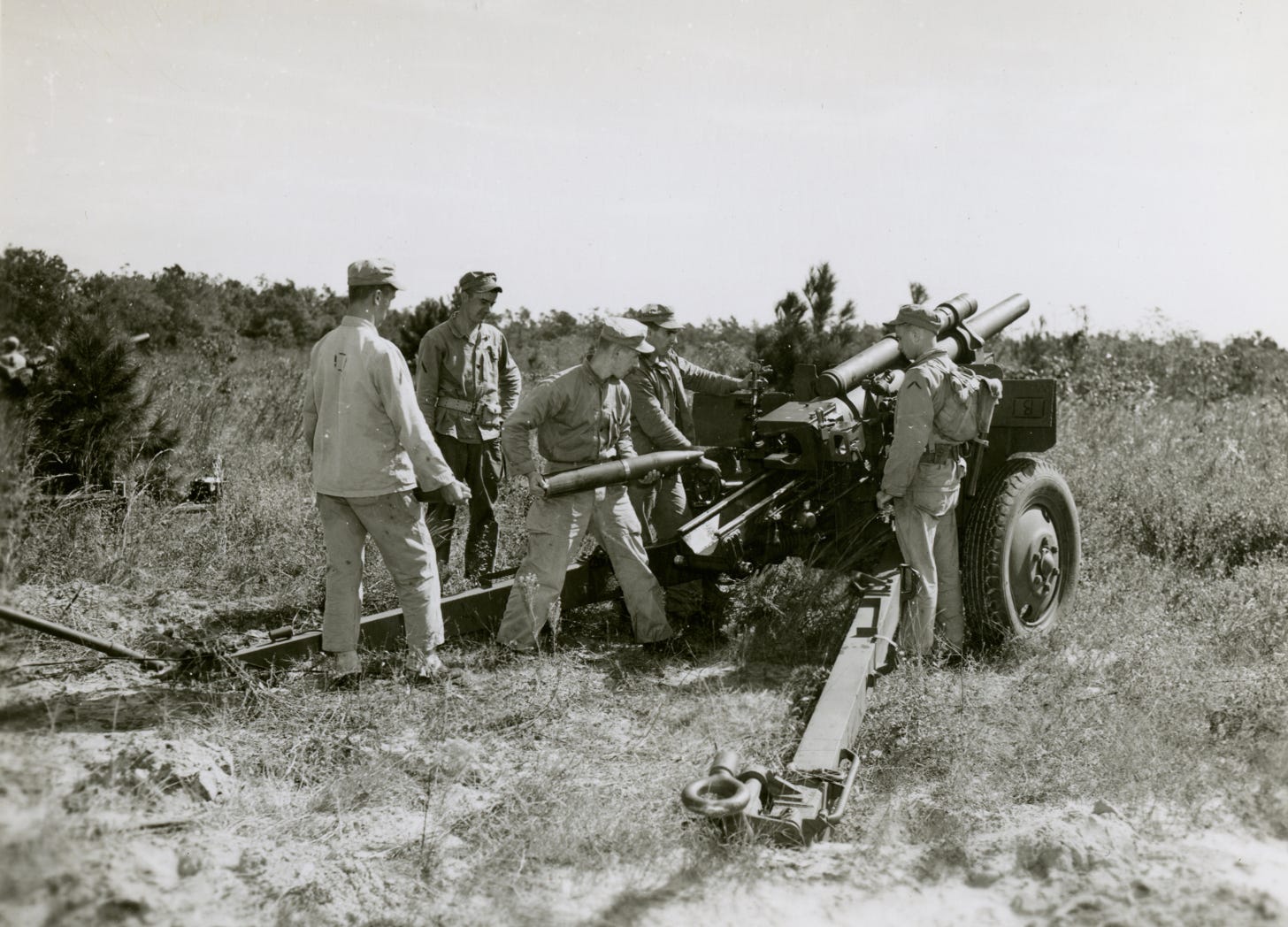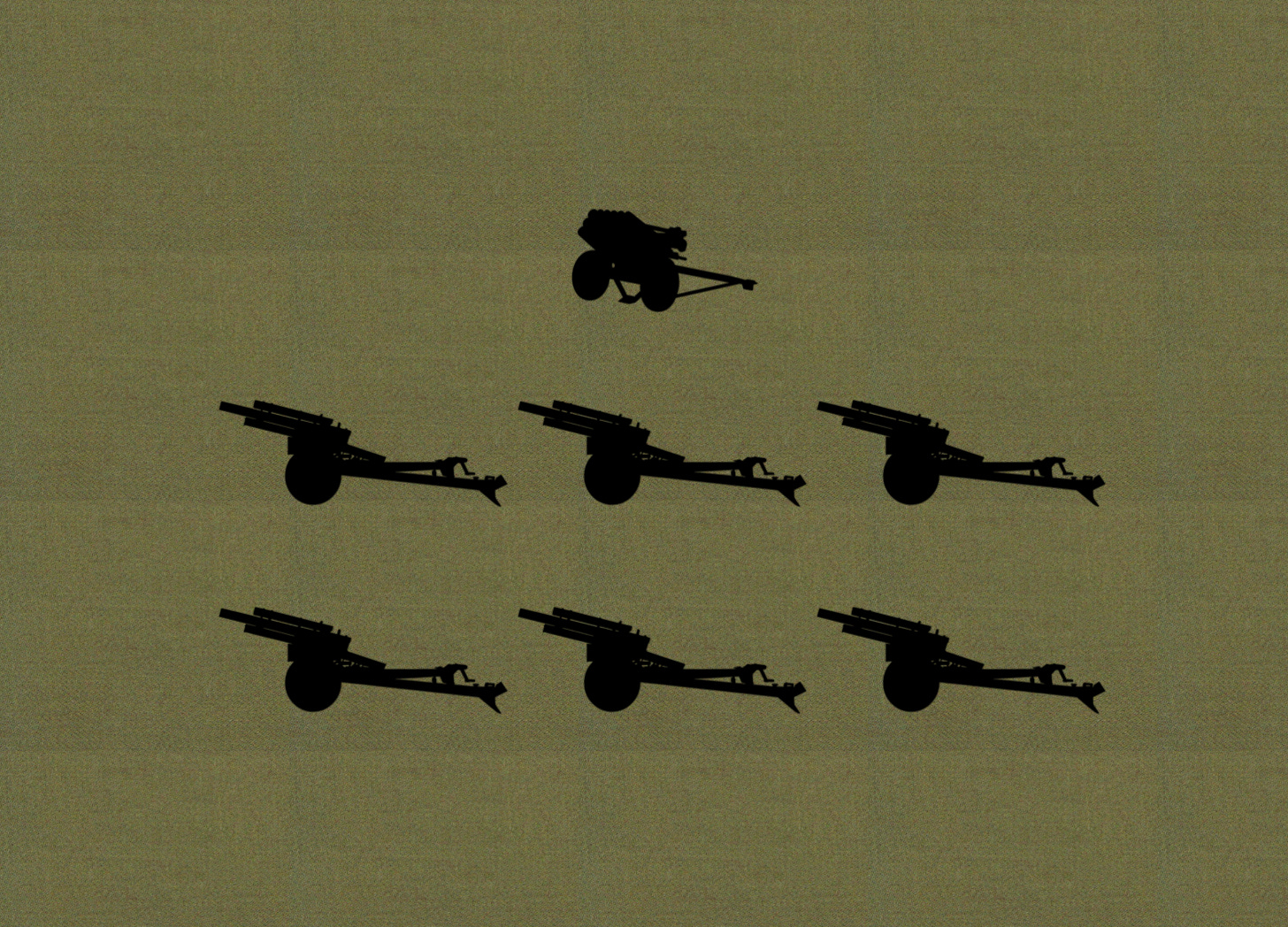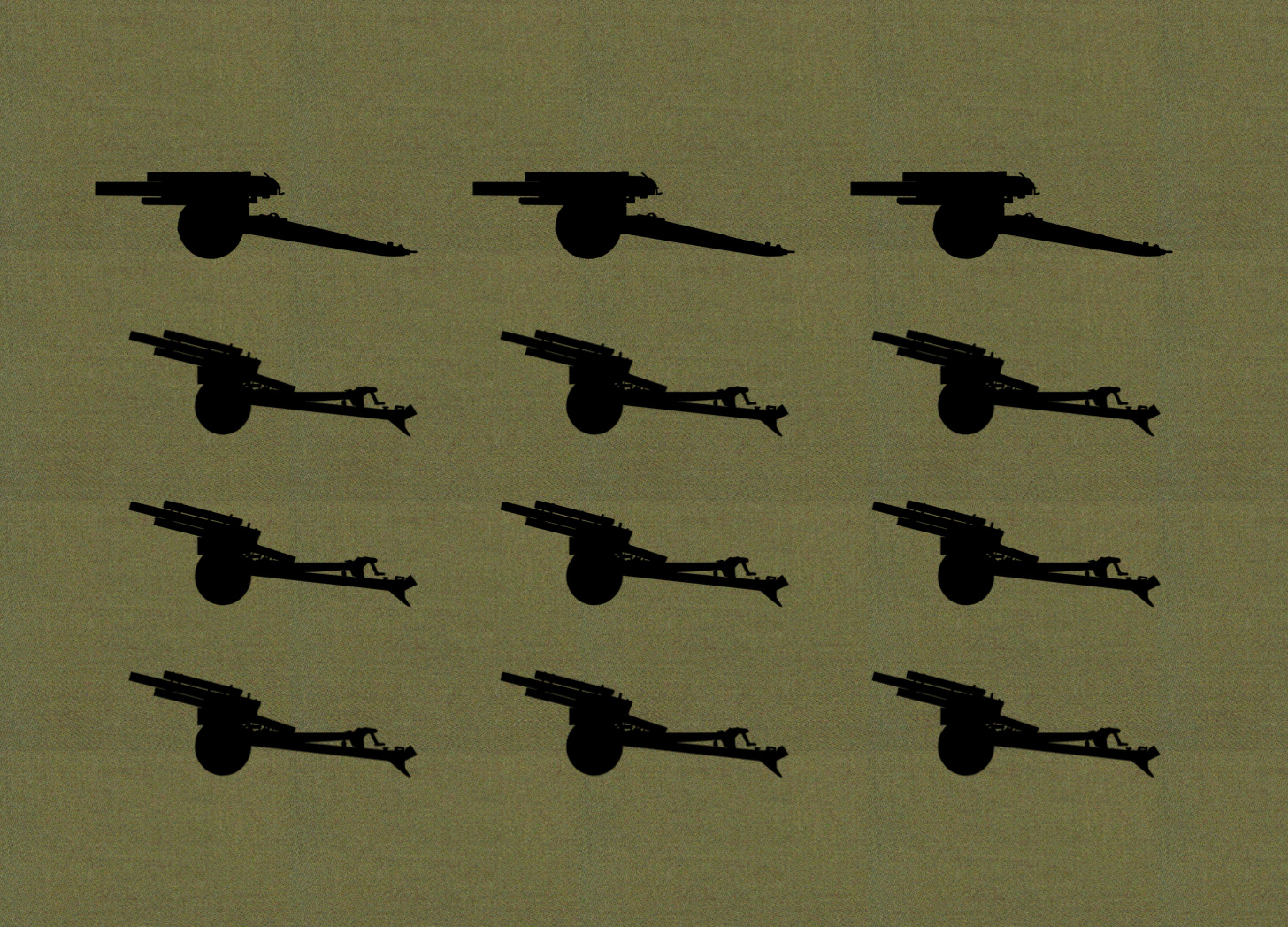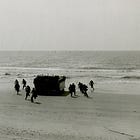More Modularity
The Marine Artillery Regiment of 1947

On 4 September 1945, just two days after the formal surrender of the Japanese Empire, the United States Marine Corps adopted the G-Series of tables of organization, documents that, in the course of doing a great many things, provided each of its six divisions with an artillery regiment that looked a lot like the field artillery establishment that had been allotted to the standard US Army infantry division for more than three years.
Both the new Marine artillery regiment and the old Army division artillery rated one battalion of 155mm howitzers and three battalions of 105mm howitzers. For another, each of the battalions in question consisted of three four-piece batteries.
Indeed, the chief difference between the two structures lay in the realm of nomenclature. Thus, when a Marine spoke of the ‘15th Marines’, he described to the entirety of the field artillery of the 6th Marine Division. However, when his Army counterpart mentioned the ‘15th Field Artillery’, he referred to one of the four field artillery battalions of the 2nd Infantry Division.
Enshrined in the J-Series of organizational tables, the reform of 1947 left each artillery regiment with every one of the thirty-six 105mm howitzers it had previously possessed. However, rather than forming these into nine four-piece batteries, the new establishments assembled them into six six-piece firing units, each of which, while styled a ‘battery’, depended directly on the regimental headquarters. (In other words, the J-Series tables of organization abolished the echelon of command, support, and fire control that had previously stood between the commanders of individual batteries and the commanding officer of the artillery regiment.)
The same restructuring deprived the Marine artillery regiment of all of its 155mm howitzers. However, in partial compensation for this loss, the authors of the new establishments provided each regiment with a rocket battery. (For more on the latter please see Buck Rogers’ Marines.)

The elimination of artillery battalions reflects the presumption that the J-Series division would operate as a loose collection of autonomous battlegroups, each built around a single infantry battalion and a single field artillery battery. If I am not too badly mistaken, it also owes something to the relatively new practice, made possible by the proliferation of radio sets and perfected in the Pacific War, of quickly bringing to bear, upon a single target, the fires of widely separated firing units, whether artillery batteries, mortar platoons, rocket detachments, aircraft, or warships.
Sources
A Chronology of the US Marine Corps, Volume III (1947-1964) (Washington, DC: US Marine Corps, 1971) page 4 (USMC)
‘The New FMF’ The Marine Corps Gazette (May 1947) pages 10-14 (Internet Archive)
For Further Reading







At least they went back to 6 tube batteries. I have always understood that a 4 tube unit was too small for sustained operations and really only made sense in extreme situations.